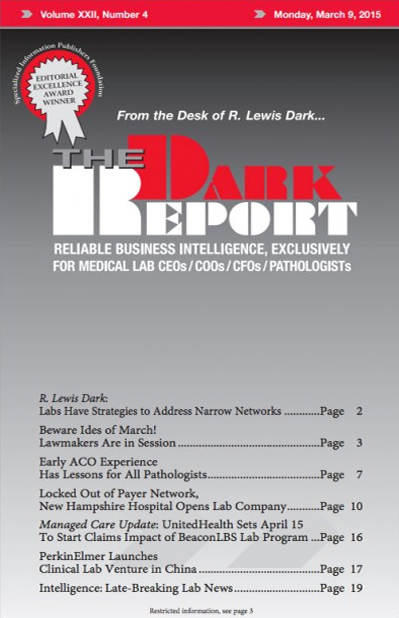CEO SUMMARY: Few pathologists and lab administrators know that, when the Protecting Access to Medicare Act of 2014 (PAMA) became law last April 1, language in the bill was scored to reduce Part B clinical laboratory test fees by $2.5 billion over 10 years. Congress used those lab fee cuts to patch the Sustainable Growth Rate (SGR) temporarily. The one-year patch expires on March 31, 2015. Now federal lawmakers must again address the SGR problem with some type of fix, including more spending offsets.
To access this post, you must purchase The Dark Report.


